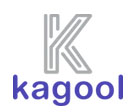SMART FACTORY TRANSFORMATION WITH THE OCTET RULE
Octet rule is rule of thumb in Chemistry states that, atoms tend to form compounds in ways that give them 8 valence electrons & thus the electron configuration of a noble gas.
 Analogously, to build or to transform to a #SMARTFACTORY, well-defined 8 strategies are important.
Analogously, to build or to transform to a #SMARTFACTORY, well-defined 8 strategies are important.
1. Connectivity :
Well-defined network infrastructure strategy for ubiquitous, reliable & resilient backbone for connecting the “things” of your factory is a great foundational step. Connecting, especially the legacy and proprietary systems on the shop floor located deeper inside the factory or operating under extreme conditions is a big challenge the manufacturers and integrators face today. Thanks to the #5G connectivity which promises to overcome all challenges and comes in a customized format for every use case.
2. DAQ:
Data acquisition from disparate OT systems, is most critical for the #Shop-to-Top connectivity. The old and proprietary technologies and protocols post practical challenges. The customized integration by way of sensor engineering using #IIoT or developing custom communication drivers are a few options which would work in most cases. The data access controls built by machine vendors are some of the challenges need to be addressed little differently though.
3. Data Management:
They say, ‘Data is the oil of next century & analytics is the engine’. Data today comes in all formats, shapes and sizes, called #BIGDATA. Data management strategy addressing 4 Vs (Variety, Volume, Velocity, Veracity) of Big Data is at CenterStage of the game. #DataLake with good #datagovernance policies should prevail in the strategy
4. Integration:
Manufacturers in current #Industry3.0 era have very matured enterprise systems like, CRM, PLM, Recipe Management, ERP, MES, LIMS. For #Industry4.0 adoption, #EnterpriseIntegration connecting all these pillar systems of manufacturing bring in a great advantage in end-to-end process management (#MOM) & getting the most returns from these investments. While software integration is a hard work, the potential benefits are great. Integrated systems would provide the much-needed #agility of operations too.
5. People & Skills Management:
The process & technology transformation is dependent on the “people” who should be at the centre of the sustainable transformation strategy & will always remain key enablers & influencers in the success of transformation. Upskilling them to lead in the digital world should be the #HRstrategy. ‘Citizen developers’ strategy is key for technologies like #RPA to ‘make a robot for every person’ a reality. ‘People change management’ is a most challenging step to even begin the transformation journey. The ‘involvement of external consultants’ at right stages is must as they bring in the outside-in view & the learnings from the external world.
6. Tools & Technology:
Amongst the busy market of technology products & vendors, it’s more important to evaluate & choose right technologies & partners. Ensure the operating architecture to be scalable, resilient and performance driven yet secure with right mix of existing technologies & new technologies (IoT, AI / ML, RPA).
7. Roadmap:
Long term strategies must be backed by the long-term solution & technology roadmaps. ‘Think Big, Start Small & Scale Fast’ is a success mantra for digital transformations & #Agile & #MVP approaches are the way forward when it comes to building & deploying the systems.
8. Target State Architecture:
The outcome of all the above stages of transformation planning should be a blueprint of the ‘to-be-state architecture’ which is comprehensive, well defined with consideration of reducing the risk by way of removing/integrating obsolete, siloed & legacy systems, putting right #industry4.0 tools like data lakes, IoT platforms, AI/ML & other digital technologies to created a well-weaved and optimized architectural backbone. Digital factory platform, messaging bus with #API are some of the common considerations.
The hosting strategy should be a good mix of cloud & edge. Hybrid approach for Smart Factory would work the best for latency risk aversion in closed loop controls.

About the Author:

Mr. Hemant Patil
Head of IoT – Kagool, UK.
Mr. Hemant is a Subject Matter Expert for Smart Factory and is an evangelist for Industry 4.0 solutions for the manufacturing industry He carries 30 years of rich experience of design and deployment of Plant floor applications and IT systems using varied technologies. During his professional career, Hemant has served many manufacturing giants and have delivered complex IT programs and projects globally for Auto, Aero, IHM, Steel, Refineries and Process industry. Hemant has a passion of working as a catalyst for the organisations to embrace digital transformation leveraging Industry 4.0 principles and framework, and he loves to mentor teams on this journey. Hemant finds time to write technical articles and travel blogs on leading industrial magazines like Automation World, EFY and the digital platform of LinkedIn.
Mr. Hemant has been associated with premier organizations such as GE and TATA throughout his career and has served reputed logos globally.
Mr. Hemant currently heads the IoT business at Kagool, UK.
Mr. Hemant is a B.E. Computer Engineer from Pune university and has completed his graduation from a pioneer institute, Pune Institute of Computer Technology, in the year 1991.
Mr. Hemant Patil can be contacted at :
LinkedIn : https://www.linkedin.com/in/he
E-mail : [email protected]











